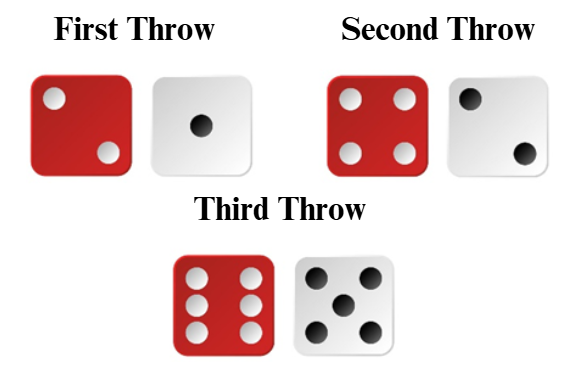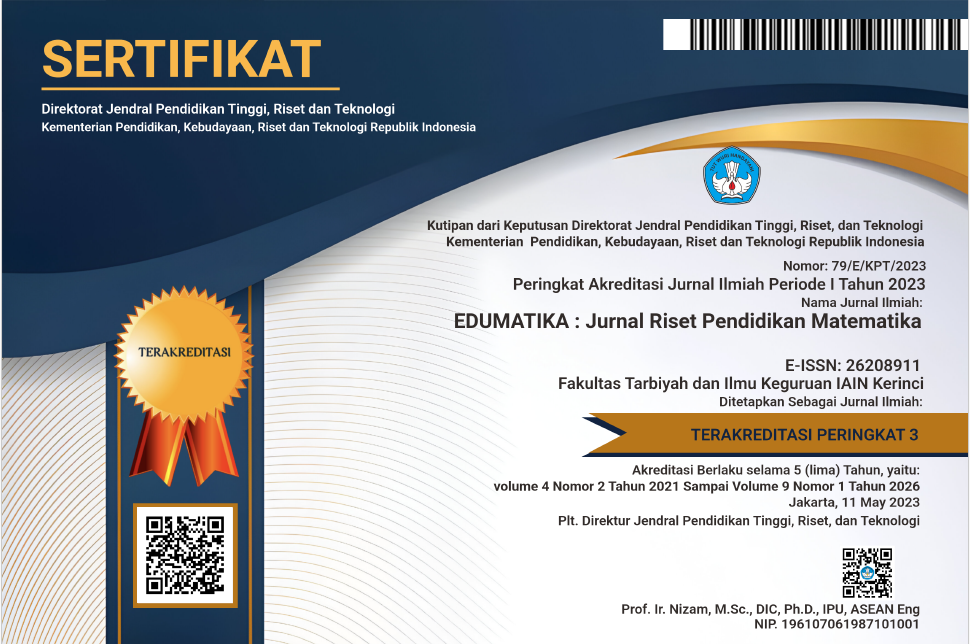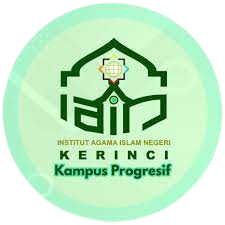Developing and Validating MCA-Equivalent Summative Assessment in Combinatorics Using Aiken’s V Method
Abstract
This study aims to analyze the content validity of summative assessment items in Combinatorics that are aligned with the Minimum Competency Assessment (MCA) framework. The study was motivated by the need for valid and high-quality assessment tools that support meaningful and sustainable mathematics learning. This study employed a research and development (R&D) design but it focuses primarily on the Develop stage, which aims to obtain a valid summative assessment instrument. The Aiken’s V method was used to measure the content validity of nine multiple-choice items developed according to the MCA numeracy domains, cognitive levels, and contexts. Three mathematics education experts served as validators. The analysis showed that the Aiken’s V indices ranged from 0.64 to 0.73, indicating medium validity. These results suggest that the instrument can be used after minor revisions. The validated instrument provides a reference for educators to design MCA-oriented summative assessments that enhance students’ mathematical literacy and reasoning skills. Future research may apply other validation methods such as Gregory’s analysis to strengthen the evidence of validity.
Downloads
References
Aiken, L. R. (1980). Content validity and reliability of single items or questionnaires. Educational and Psychological Measurement, 40(4), 955–959. https://doi.org/10.1177/001316448004000419
Aiken, L. R. (1985). Three coefficients for analyzing the reliability and validity of ratings, educational and psychological measurument. Educational and Psychological Measurement, 45(1), 131–142. https://doi.org/10.1177/0013164485451012
Alhunaini, S., Osman, K., & Abdurab, N. (2020). The development and validation of assessment practices of mathematical thinking (APMT) instrument (Pembangunan dan pengesahan instrumen amalan pentaksiran pemikiran matematik (APMT). Jurnal Pendidikan Malaysia, 45(02), 79–91. https://doi.org/10.17576/jpen-2020-45.02-08
An Nabil, N. R., Wulandari, I., Yamtinah, S., Ariani, S. R. D., & Ulfa, M. (2022). Analisis indeks Aiken untuk mengetahui validitas isi instrumen asesmen kompetensi minimum berbasis konteks sains kimia. Paedagogia, 25(2), 184. https://doi.org/10.20961/paedagogia.v25i2.64566
Andrianti, D. S., & Rahayu, P. (2022). Kemampuan literasi numerasi berdasarkan kecerdasan logis matematis melalui soal AKM pada siswa SMP. JTMT: Journal Tadris Matematika, 3(2), 55–63. https://doi.org/10.47435/jtmt.v3i2.1189
Aydinyer, Y., & Ubuz, B. (2025). Development and Validation of deep procedural knowledge test on angles and polygons (Deep-ProKT-AngPoly). International Journal of Science and Mathematics Education, 0123456789. https://doi.org/10.1007/s10763-025-10543-0
Batanero, C., Navarro-Pelayo, V., & Godino, J. D. (1997). Effect of the implicit combinatorial model on combinatorial reasoning in secondary school pupils. Educational Studies in Mathematics, 32, 181–199. https://doi.org/10.1023/A:1002954428327
Chytry, V., & Kubiatko, M. (2021). Pupils’ summative assessments in mathematics as dependent on selected factors. Eurasia Journal of Mathematics, Science and Technology Education, 17(8), 1–11. https://doi.org/10.29333/EJMSTE/11112
Goos, M., Geiger, V., & Dole, S. (2014). Transforming professional practice in numeracy teaching. In Y. Li, E. A. Silver, & S. Li (Eds.), Transforming Mathematics Instruction: Multiple Approaches and Practices (pp. 81–102). Springer. https://doi.org/10.1007/978-3-319-04993-9_6
Griffin, P., McGaw, B., & Care, E. (Eds.). (2012). Assessment and teaching of 21st century skills. Springer. https://doi.org/10.1007/978-94-007-2324-5
Hilden, R., Oscarson, A. D., Yildirim, A., & Fröjdendahl, B. (2022). Swedish and Finnish pre-service teachers’ perceptions of summative assessment practices. Languages, 7(1), 1–23. https://doi.org/10.3390/languages7010010
Izzati, N., Wahyuni, N., & Irawan, B. (2023). Development of an interactive PowerPoint to instill a deeper understanding of polyhedron concepts in mathematics class. Alifmatika: Jurnal Pendidikan Dan Pembelajaran Matematika, 5(1), 95–109. https://doi.org/10.35316/alifmatika.2023.v5i1.95-109
Kania, N., Kusumah, Y. S., Dahlan, J. A., Nurlaelah, E., Gürbüz, F., & Bonyah, E. (2024). Constructing and providing content validity evidence through the Aiken’s V index based on the experts’ judgments of the instrument to measure mathematical problem-solving skills. REID (Research and Evaluation in Education), 10(1), 64–79. https://doi.org/10.21831/reid.v10i1.71032
Lawshe, C. H. (1975). A quantitative approach to content validity. Personnel Psychology, 28(4), 563–575. https://doi.org/10.1111/j.1744-6570.1975.tb01393.x
Lestari, P., & Ali, N. N. (2023). Website-based learning: Optimizing students’ numeracy skills. Edumatika : Jurnal Riset Pendidikan Matematika, 6(2), 82–91. https://doi.org/10.32939/ejrpm.v6i2.2973
Lukman, H. S., & Setiani, A. (2018). Validitas bahan ajar statistika terapan berbasis ICT terintegrasi proyek. Edumatika : Jurnal Riset Pendidikan Matematika, 1(2), 36. https://doi.org/10.32939/ejrpm.v1i2.226
Nurjanah, S., Istiyono, E., Widihastuti, W., Iqbal, M., & Kamal, S. (2023). The application of Aiken’s V method for evaluating the content validity of instruments that measure the implementation of formative assessments. Journal of Research and Educational Research Evaluation, 12(2), 125–133. http://journal.unnes.ac.id/sju/index.php/jere
OECD. (2023). PISA 2022 Assessment and Analytical Framework. OECD Publishing. https://doi.org/10.1787/dfe0bf9c-en
Pandra, V., & Aswarliansyah. (2023). Validitas isi instrumen tes matematika siswa kelas VII SMP semester ganjil. Jurnal Pendidikan Matematika: Judika Education, 13(1), 104–116. https://doi.org/10.31539/judika.v6i2.7631
Polit, D. F., & Beck, C. T. (2006). The content validity index: Are you sure what’s being reported? Critique and recommendations. Research in Nursing & Health, 29(5), 489–497. https://doi.org/10.1002/nur.20147
Prafianti, R. A., Ilmayasinta, N., & Silvia, I. A. (2023). Validitas buku ajar matematika SMP sebagai penguat asesmen kompetensi minimum dengan konteks sosial budaya Jawa Timur. JIPMat, 8(2), 210–219. https://doi.org/10.26877/jipmat.v8i2.16380
Pratiwi, I. R., Sari, E. M., Novitasari, N., Zikri, A., & Putra, M. G. P. (2023). Pengembangan aplikasi Smart – Calculator berbasis digital sebagai media pembelajaran materi kombinatorika [Developing Smart application – Digital-based Calculator as a reinforcement media in learning discrete mathematics]. JOHME: Journal of Holistic Mathematics Education, 7(2), 180. https://doi.org/10.19166/johme.v7i2.7450
Putra, A., Syarifuddin, H., & Zulfah. (2018). Validitas lembar kerja peserta didik berbasis penemuan terbimbing dalam upaya meningkatkan pemahaman konsep dan kemampuan penalaran matematis. Edumatika : Jurnal Riset Pendidikan Matematika, 1(2), 56–62. https://doi.org/10.32939/ejrpm.v1i2.302
Putri, M. R., As’ari, A. R., & Sisworo, S. (2020). Gesture mahasiswa dalam menyelesaikan masalah kombinatorika dengan jawaban benar berdasarkan tahap berpikir Mason. Jurnal Pendidikan: Teori, Penelitian, Dan Pengembangan, 5(8), 1190. https://doi.org/10.17977/jptpp.v5i8.13962
Putri, Y. F., Kadir, K., & Dimyati, A. (2022). Analysis of content validity on mathematical computational thinking skill test for junior high school student using Aiken method. Hipotenusa : Journal of Mathematical Society, 4(2), 108–119. https://doi.org/10.18326/hipotenusa.v4i2.7465
Ramadani, A. H., Ekohariadi, Anifah, L., Nugroho, Y. S., & Safitri, R. (2024). Development of performance assessment instruments for measuring drawing skills in vocational students competence in mechanical engineering expertise. IJORER : International Journal of Recent Educational Research, 5(2), 268–279. https://doi.org/10.46245/ijorer.v5i2.551
Rios, J., & Wells, C. (2014). Validity evidence based on internal structure. Psicothema, 26(1), 108–116. https://doi.org/10.7334/psicothema2013.260
Roebianto, A., Savitri, S. I., Aulia, I., Suciyana, A., & Mubarokah, L. (2023). Content validity: Definition and procedure of content validation in psychological research. TPM - Testing, Psychometrics, Methodology in Applied Psychology, 30(1), 5–18. https://doi.org/10.4473/TPM30.1.1
Siahaan, M. M. L., Hijriani, L., & Toni, A. (2022). Identifikasi kemampuan literasi numerasi melalui instrumen asesmen kompetensi minimum pada siswa SMA kelas XI SMAS Warta Bakti Kefamenanu [Identification of the numerical literacy ability of grade 11 students at Warta Bakti Kefamenanu high school using the minimum competency assessment instrument. JOHME: Journal of Holistic Mathematics Education, 6(2), 178. https://doi.org/10.19166/johme.v6i2.5751
Susantini, E., Sari, Y. M., Asteria, P. V., & Marzuqi, M. I. (2025). Proving content validity of Android-based higher order thinking skill assessment for science and mathematics preservice teacher. Journal of Education and Learning, 19(1), 551–560. https://doi.org/10.11591/edulearn.v19i1.21207
Taherdoost, H. (2016). Validity and reliability of the research instrument: How to test the validation of a questionnaire/survey in research. International Journal of Academic Research in Management, 5(3), 28–36. https://doi.org/10.2139/ssrn.3205040
Tandas, J. B. (2021). Development of a valid and reliable summative test in plane trigonometry. Journal of Science and Mathematics Letters, 9(1), 45–59. https://doi.org/10.37134/jsml.vol9.1.5.2021
Viyana, D., Mardiyana, Riyadi, & Usodo, B. (2025). Kesalahan siswa dalam menyelesaikan soal trigonometri ditinjau dari literasi numerasi pada level konitif knowing, applying, dan reasoning. JIPMat (Jurnal Ilmiah Pendidikan Matematika), 10(1), 31–42. https://doi.org/10.26877/jipmat.v10i1.1645
Zakiyah, Z., & Kartika, H. (2024). Uji validitas konten instrumen kemampuan representasi matematis dalam menyelesaikan masalah bangun datar. JP2M (Jurnal Pendidikan Dan Pembelajaran Matematika), 10(1), 250–257. https://doi.org/10.29100/jp2m.v10i1.5485

Copyright (c) 2025 Nurjihan Nabilah, Sovy Dia Permata Sari, Yurizka Melia Sari

This work is licensed under a Creative Commons Attribution 4.0 International License.














